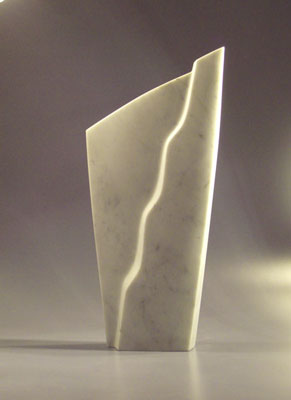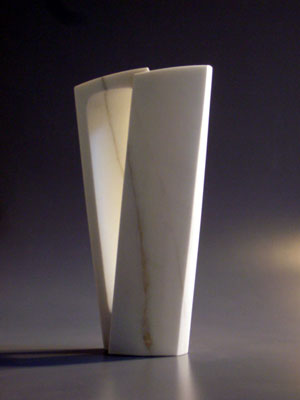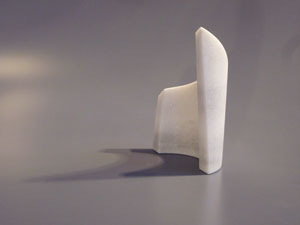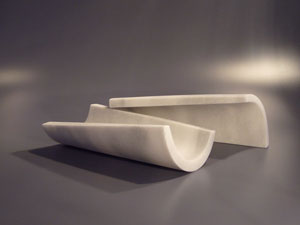Kashiwanoha-Campus art project
August 10, 2007

| titel | "Spring" |
|---|---|
| design and made by | Kate Thomson |
| material | Carra bianco marble |
| size | 40x25x60cmH |
| location | Kashiwanoha-Campus, Chiba, Japan |

| title | "Primavera" |
|---|---|
| design and made by | Kate Thomson |
| material | Carra bianco marble |
| size | 25x40x50cmH |
| location | Kashiwanoha-Campus, Chiba, Japan |

| title | "Printemps" |
|---|---|
| design and made by | Kate Thomson |
| material | Balkan whitemarble |
| size | 250x40x40cmH |
| location | Kashiwanoha-Campus, Chiba, Japan |
Spring", "Primavera", "Printemps"
Kate Thomson
Short statements for plaques placed next to Kate Thomson’s sculptures in Kashiwanoha Campus Art Project
"Spring" (Italian Cararra Bianco marble) by Kate Thomson.
In English, ‘spring’ means the renewal of life after the long, dark winter, it also means ‘‘a point at which water issues forth from the earth‘‘. A spring bubbling up from the surface and flowing quietly deep in the forest, or tumbling downhill to the sea from a mountain top, contains the profound mystery of all living things and reflects its life giving partner light in its playful journey. The sculpture gives tangible form to the partnership of water & light, and the delicate balance of life. It looks like a plant, reaching to the sun for growth, and simultaneously conjures the shimmering fountain of life. Placed to face people as they leave the building so that the stepped movement also indicates a journey.
"Primavera"(Italian Cararra Bianco marble) by Kate Thomson.
‘Primavera’ is the Italian word for ‘spring’. The word can be translated as ‘first truth’. The open form of this sculpture is made up of two sides reflecting the ambient light inside. Like a couple held together in mutually supportive tension to create and protect a new space between them. Placed to face people as they enter the building to indicate a return home to family and hearth.
"Printemps" (Macedonian Balkan white marble) by Kate Thomson.
‘Printemps’ is the French word for ‘spring’ and can be translated as ‘first time’. These three sculptures twist in helical spring spirals found in many natural growth patterns. Each piece explores a different way of using form to articulate light; highlighting the inner radiance of different rhythms and activities in the partitioned space indicating the wealth of life and activity in the building. The subtle striped colour is created from the different layers of organic sediment that settled millennia ago before turning to stone underground. Now brought back into the light I have used the material’s translucent quality to play with the enduring dance of light and life.


